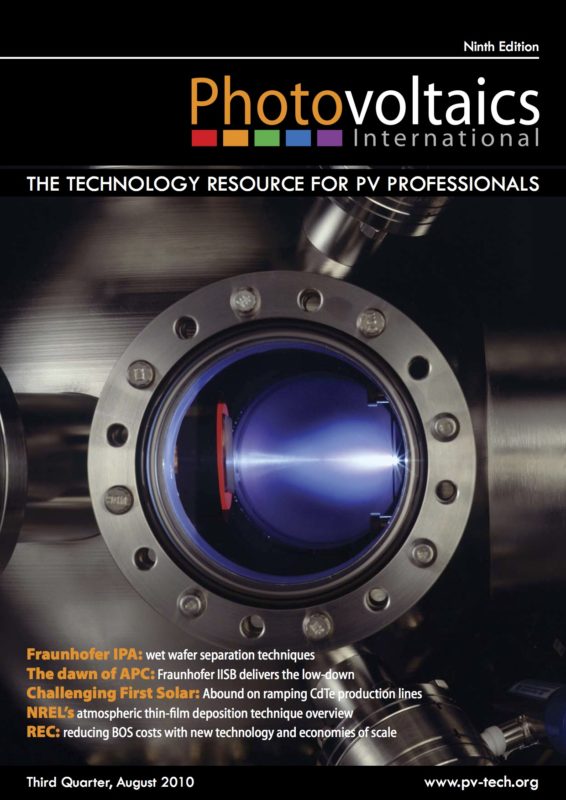By Harold J. Hovel, Research Staff Member, IBM Corporation; Rainer Krause, Engineering Manager for Automation, IBM Corporation; Katherine Saenger, Research Staff Member, IBM Corporation; Kevin Prettyman, Technology Leader, Microelectronics Division, IBM Corporation,
Solar cells are generally built in a process facility, often a turnkey line, where high throughput, minimum handling, and lowest cost are dominant factors. There are many complementary metal oxide semiconductor (CMOS) lines in the semiconductor industry – probably more than the number of turnkey lines – where yield, reliability, and device size and complexity are major issues, where millions of chips are made with very close tolerance, and the cost of importance is that of the finished chip. The possibility of using or converting a CMOS line for building Si solar cells has been considered by many in the past [2]. These lines have advantages such as sophisticated and highly developed automated equipment, frequent in-process metrology and quality control, and a high degree of flexibility as well as highly advanced shop floor control systems. The major disadvantages are cost and low throughput. This paper will discuss the differences, advantages, and disadvantages of CMOS and turnkey lines and show preliminary results for Si cells made in the CMOS line.


